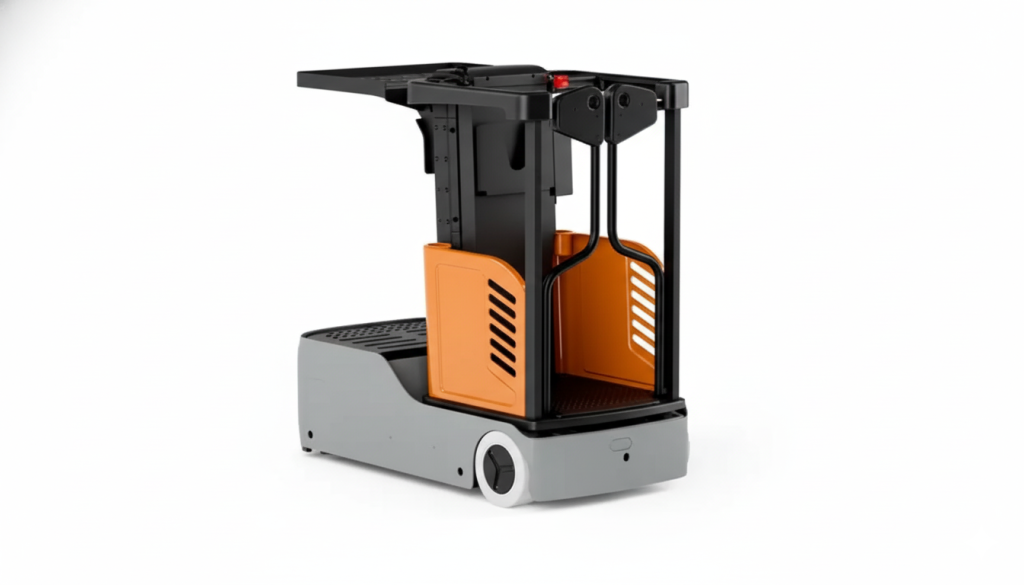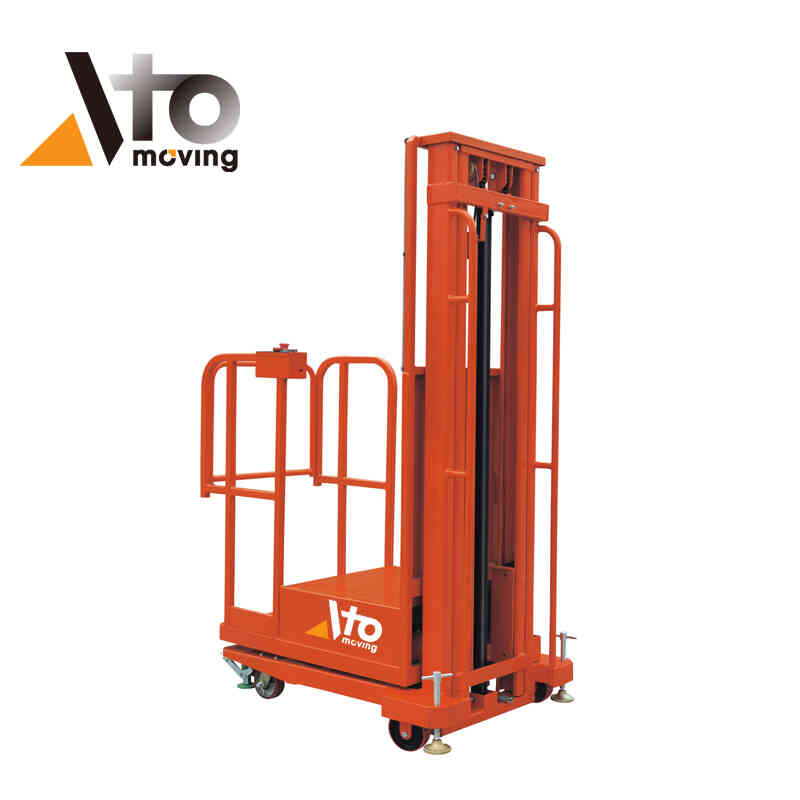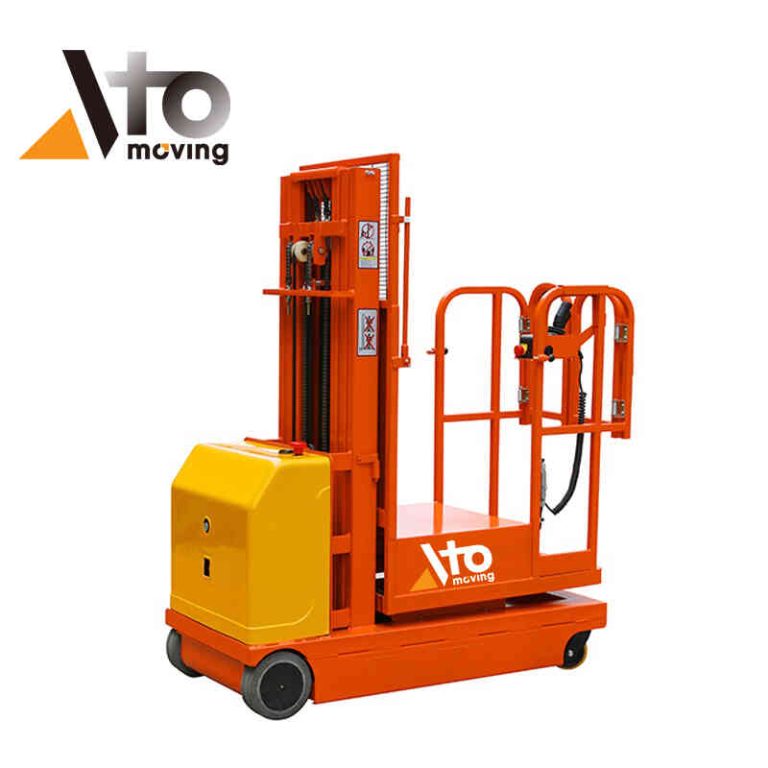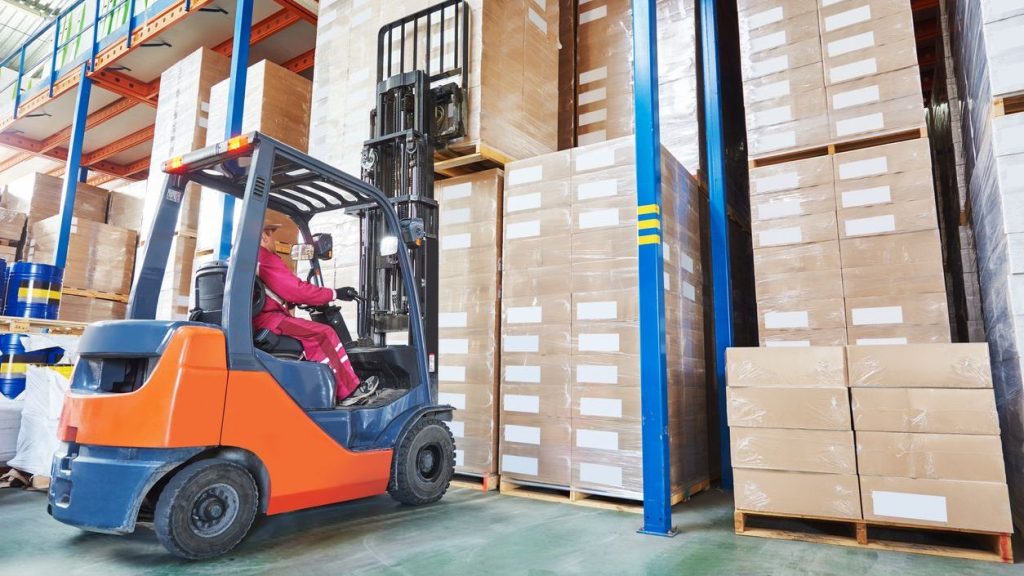Small warehouses face a critical challenge: maximizing storage and efficiency within limited space and budget. The right order picker solves this problem by enabling vertical storage up to 25 feet, effectively tripling or quadrupling your capacity without expanding your building footprint.
Order pickers are specialized machines that elevate operators to shelf height for direct product retrieval—eliminating ladders and dramatically improving both speed and safety. Unlike forklifts, they’re designed specifically for narrow-aisle operation (as tight as 5-6 feet), making them ideal for small warehouse environments.
This guide helps you identify the best order picker for your operation by examining equipment types, essential features, power sources, and investment considerations. Whether you’re processing 100 or 1,000 order lines daily, understanding these factors ensures you select equipment that delivers maximum value for your specific needs.
Table of Contents
- Why Order Pickers Matter for Small Warehouses
- Types of Order Pickers: Finding Your Match
- Key Features That Impact Performance
- Electric vs. Manual: Choosing Your Power Source
- Investment and ROI: What to Expect
- Safety Requirements and Training
- Maintenance for Long-Term Success
- Making Your Final Decision
- Frequently Asked Questions
Why Order Pickers Matter for Small Warehouses
Order pickers are the workhorses of modern warehouse picking operations. These machines elevate both the operator and a load platform, allowing workers to pick products directly at shelf height—eliminating the need for ladders or scaffolding and dramatically improving ergonomics and speed.
For small warehouses, order pickers solve a fundamental problem: how to store more inventory without expanding your building footprint. By utilizing vertical racking systems extending 15 to 25 feet high, you can triple or quadruple your storage density compared to ground-level storage alone.
The impact goes beyond simple storage capacity. The right order picker directly influences picking speed, order accuracy, worker safety, and ultimately, customer satisfaction. In e-commerce and distribution environments where fulfillment speed creates competitive advantage, appropriate order picking equipment becomes strategic rather than optional.
Small warehouses benefit particularly from compact designs that navigate narrow aisles—often as tight as 5 to 6 feet—while maintaining stable, safe elevation. This combination allows small facilities to compete effectively with larger operations by optimizing every square foot of available space.
Types of Order Pickers: Finding Your Match
Premium Tier Order Pickers
Premium tier order pickers represent the highest quality equipment available, typically offered by established manufacturers with decades of material handling expertise. These units feature advanced technology including AC motor systems, programmable performance controls, and sophisticated stability management systems that continuously monitor operating conditions.
Premium models generally offer lift heights up to 20 feet with exceptional maneuverability in aisles as narrow as 5.5 feet. Chassis widths typically measure 29 to 30 inches, enabling operation in tight spaces while maintaining stability. These units often include advanced features such as regenerative braking for extended battery life, proportional hydraulic controls for smooth operation, and comprehensive diagnostic systems.
Battery options for premium tier equipment include both traditional lead-acid and modern lithium-ion configurations, with lithium-ion systems providing up to 30 percent longer runtime per charge and significantly reduced maintenance requirements.
Investment costs for premium order pickers typically range from $22,000 to $35,000 depending on configuration, lift height, and battery technology selected. While representing higher initial investment, these units often deliver superior longevity, lower operating costs, and enhanced operator productivity.
Mid-Range Order Pickers
Mid-range order pickers provide excellent value, balancing robust functionality with more accessible pricing. These units typically offer lift heights between 12 and 18 feet with platform capacities ranging from 500 to 600 pounds—adequate for the vast majority of small warehouse applications.
Features commonly found in mid-range models include spacious operator platforms for enhanced comfort, good visibility in all directions, and automatic speed reduction systems that adjust travel velocity based on platform height for improved safety. Many mid-range units also incorporate proportional controls, standard safety features, and optional capabilities such as side-shift for improved load positioning.
Chassis designs in this category typically accommodate aisle widths of 5.5 to 6 feet, making them suitable for maximizing storage density in smaller facilities. Construction quality emphasizes reliability and ease of maintenance, with readily accessible components and straightforward diagnostic systems.
Pricing for mid-range order pickers generally falls between $18,000 and $28,000, positioning them as attractive options for operations seeking quality equipment without premium pricing. These units often deliver excellent total cost of ownership through reliable performance and reasonable maintenance requirements.
Entry-Level and Budget Order Pickers
Entry-level order pickers serve warehouses operating on tighter budgets or handling lighter-duty applications. These models typically feature lift heights up to 12 to 15 feet with platform capacities between 400 and 500 pounds, suitable for facilities with lower racking configurations or less intensive picking requirements.
While more basic than premium and mid-range alternatives, quality entry-level models include essential safety features such as automatic braking, overload protection, and deadman controls. The compact footprint and straightforward operation make these units particularly appropriate for smaller operations with limited operator experience or training resources.
Entry-level equipment emphasizes simplicity and ease of use, often featuring basic control systems and standard battery configurations. Maintenance requirements remain manageable, though component quality may not match premium tier durability standards.
Investment costs for entry-level order pickers typically range from $12,000 to $20,000 for new units, representing exceptional value for operations with moderate picking volumes or budget constraints. These models provide solid performance for facilities processing fewer than 1,000 order lines daily or requiring backup equipment to supplement primary picking systems.
Specialized Narrow Aisle Order Pickers
Some manufacturers offer specialized narrow aisle order pickers designed specifically for maximum space utilization. These units feature ultra-compact chassis designs enabling operation in aisles as tight as 4.5 to 5 feet while still providing lift heights up to 18 feet.
Specialized narrow aisle models incorporate advanced stability systems to maintain safe operation despite reduced footprints. Features often include wire guidance systems for precise navigation, enhanced operator visibility through optimized mast designs, and specialized wheel configurations for improved maneuverability.
While these units command premium pricing—typically $25,000 to $38,000—they enable small warehouses to achieve storage densities approaching those of very narrow aisle (VNA) systems without requiring specialized racking or guidance infrastructure. For facilities where space represents the primary constraint, specialized narrow aisle order pickers can deliver exceptional return on investment through increased storage capacity.
Key Features That Impact Performance
Understanding critical specifications helps you match equipment to your operational needs. Focus on these key areas when evaluating options.
Lift Height and Load Capacity
Your racking configuration drives lift height requirements. Small warehouses typically use racking between 12 and 25 feet, requiring order pickers with corresponding capabilities. Most models designed for small facilities offer:
- Lift heights: 12 to 20 feet
- Platform capacity: 500 to 1,000 pounds (including operator weight)
Plan for growth by selecting equipment with lift capacity exceeding your current maximum by 2 to 3 feet. This provides flexibility for future warehouse reconfiguration without requiring new equipment.
Aisle Dimensions and Maneuverability
Narrow aisles maximize storage density—crucial for small warehouses. Quality order pickers operate comfortably in 5 to 8-foot aisles, significantly tighter than the 10 to 12-foot aisles standard forklifts require.
What affects maneuverability:
- Chassis width (typically 29-30 inches for small warehouse models)
- Wheelbase length and turning radius
- Steering mechanism design
- 90-degree stacking capability
Look for proportional controls providing smooth, precise movements. This reduces collision risk with racking or products while improving operator confidence.
Power Systems and Battery Technology
Your power source decision significantly impacts both upfront costs and long-term operational efficiency.
Lithium-Ion Batteries:
- 6 to 8 hours runtime per charge
- Opportunity charging during breaks
- No watering or maintenance required
- 30% longer runtime than lead-acid
- Higher initial cost, lower lifetime expense
Lead-Acid Batteries:
- Lower upfront investment
- Requires regular watering and dedicated charging areas
- Longer charge times (8+ hours)
- Suitable for lower-utilization operations
For 24/7 operations, plan for multiple battery sets or fast-charging infrastructure regardless of battery type.
Operator Comfort Features
Operator fatigue directly reduces productivity and increases safety risks. Quality order pickers feature cushioned platforms with adequate standing space, controls positioned for natural reach, and smooth elevation that minimizes jarring movements.
Essential comfort features:
- Low step-in heights (8 to 12 inches) for easy entry and exit
- Non-slip platform surfaces for secure footing
- Adequate overhead clearance accommodating operators of all heights
- Intuitive control placement reducing strain during extended shifts
Comfortable operators work faster, make fewer errors, and experience less physical strain—directly impacting your bottom line.
Electric vs. Manual: Choosing Your Power Source
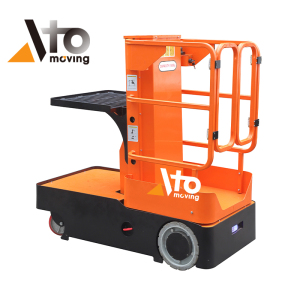
Electric Order Pickers
Electric order pickers dominate modern warehouse environments due to their superior productivity, reduced operator fatigue, and lower long-term operating costs. Battery-powered elevation and propulsion systems enable rapid vertical and horizontal movement, significantly increasing picks per hour compared to manual alternatives.
For small warehouses processing 500 or more order lines daily, electric order pickers typically deliver return on investment within 18 to 24 months through increased throughput and reduced labor costs. Modern lithium-ion battery systems eliminate traditional battery watering maintenance and provide opportunity charging capabilities that keep equipment operational throughout extended shifts.
Electric models do require higher initial capital investment, ranging from $15,000 to $35,000 depending on specifications. However, their productivity advantages and reduced physical demands on operators make them the preferred choice for most small warehouse operations planning for growth.
Manual and Semi-Electric Options
Manual order pickers, featuring hand-pumped hydraulic elevation systems, represent the most economical entry point, with prices starting around $2,000 to $5,000. These units require significant physical effort from operators and limit productivity, making them suitable only for very low-volume operations or specific applications where infrequent use doesn’t justify electric equipment.
Semi-electric order pickers, which feature electric elevation but manual propulsion, offer a middle ground. Priced between $6,000 and $12,000, these units reduce operator fatigue associated with manual pumping while maintaining lower acquisition costs than fully electric models. They work well for small warehouses with limited budgets and moderate picking volumes—typically fewer than 200 lines per day.
The decision between electric and manual options ultimately depends on your picking volume, budget constraints, and growth projections. Most small warehouses experiencing steady order volume find electric order pickers provide superior long-term value despite higher upfront costs.
Investment and ROI: What to Expect
Understanding Acquisition Costs
New Electric Order Pickers:
- Entry-level: $12,000 – $20,000
- Mid-range: $18,000 – $28,000
- Premium: $22,000 – $35,000
Alternative Acquisition Methods:
Certified Used/Refurbished Equipment:
- 30-50% cost reduction versus new
- Warranties available from reputable dealers
- Thorough inspection processes ensure reliability
Leasing Options:
- Monthly payments: $300 – $800
- Preserves capital for operations
- Often includes maintenance coverage
- Access to newer technology
Manual and Semi-Electric:
- Manual order pickers: $2,000 – $5,000
- Semi-electric models: $6,000 – $12,000
- Suitable for very low-volume operations only
Ongoing Operating Expenses
Electricity Costs: Annual charging expenses: $200 – $500 (varies by usage and local utility rates)
Maintenance Costs: Annual preventive maintenance: $800 – $1,500 for electric models when following manufacturer schedules
Battery Considerations:
- Lithium-ion: Minimal maintenance, no watering required
- Lead-acid: Regular watering, more frequent service needs
ROI Calculation Example
Scenario: An electric order picker increases picking speed by 40% compared to ladder-based picking, allowing one operator to complete work previously requiring 1.4 workers.
Calculation:
- Annual operating hours: 2,000
- Labor cost (with benefits): $18/hour
- Annual savings: 0.4 workers × 2,000 hours × $18 = $14,400
- Equipment investment: $25,000
- Payback period: 21 months
Additional ROI Factors:
- Reduced picking errors (1% improvement saves hundreds to thousands annually)
- Lower workers’ compensation claims from improved safety
- Increased order processing capacity enabling business growth
- Reduced product damage from more controlled handling
Safety Requirements and Training
Essential Safety Features
Quality order pickers incorporate multiple safety systems protecting operators and nearby workers:
Critical Safety Features:
- Deadman controls – Immediately stop travel when operator releases the handle
- Automatic braking – Engages when controls are released, ensuring controlled stops
- Perimeter guarding – Protects operators from pinch points and prevents contact with racking
- Emergency lowering systems – Enables platform descent during power or hydraulic failures
- Speed reduction systems – Automatically reduces travel speed as platform height increases
- Overload protection – Prevents operation when platform capacity is exceeded
These features aren’t optional extras—they’re essential for maintaining safe operations and OSHA compliance.
Operator Training Requirements
OSHA mandates employer-provided training for all powered industrial truck operators, including order picker operators. Comprehensive programs must include:
- Classroom instruction – Equipment capabilities, limitations, and safety protocols
- Hands-on operation – Supervised practice in actual working conditions
- Workplace evaluation – Demonstrated competency in your specific environment
Initial certification typically requires 4 to 8 hours of combined classroom and practical instruction. Refresher training is required every three years, after any incident, or when unsafe operation is observed.
Manufacturers and dealers often provide training programs. Well-trained operators not only work more safely but also extend equipment lifespan through proper handling.
Maintenance for Long-Term Success
Preventive Maintenance Schedule
A structured maintenance program dramatically extends equipment life and reliability:
Daily (Pre-Shift Inspections):
- Verify controls, brakes, hydraulics, and safety systems function properly
- Check for fluid leaks, unusual noises, or performance changes
- Confirm battery charge level is adequate for shift requirements
Weekly Maintenance:
- Check battery water levels (lead-acid only; lithium-ion requires no watering)
- Inspect tires for proper pressure, wear, and damage
- Examine hydraulic hoses and connections for leaks or wear
Monthly Service:
- Thoroughly clean equipment
- Lubricate moving components per manufacturer specifications
- Functionally test all safety systems
Annual Professional Service:
- Complete hydraulic system service
- Electrical system testing and diagnostics
- Structural inspection and component replacement as needed
Following this schedule typically results in 10 to 15 years of reliable service from quality equipment.
Common Issues and Solutions
Battery Problems – The most frequent issue. For lead-acid batteries, maintain proper water levels and avoid opportunity charging below 30% capacity. Deep cycling reduces battery lifespan significantly.
Hydraulic Leaks – Address immediately. Leaks create slip hazards and low fluid levels damage pumps. Regularly inspect hose connections and cylinder seals.
Wheel and Tire Wear – Affects performance and safety. Replace wheels when tread depth falls below manufacturer minimums or when flat spots develop. Proper wheel maintenance ensures stable, controlled operation throughout equipment life.
Maximizing Equipment Lifespan
Quality order pickers routinely deliver 10 to 15 years of reliable service with proper care—often exceeding 10,000 operating hours. Maximize your investment by:
- Promoting careful operation – Encourage gentle handling and adherence to speed/capacity limits
- Addressing issues promptly – Require operators to report unusual performance immediately
- Controlling environment – Protect equipment from temperature extremes and moisture
- Maintaining cleanliness – Remove debris that can interfere with controls and conceal problems
Consider service contracts with local dealers for predictable annual costs and professional maintenance by factory-trained technicians using genuine parts.
Making Your Final Decision
Quick Decision Framework
Step 1: Assess Your Warehouse
- Highest shelf height + 2-3 feet buffer
- Narrowest aisle width
- Daily order lines processed
- Operating schedule (hours/shifts)
Step 2: Match Your Volume to Equipment Tier
- 500+ lines/day → Premium ($22K-$35K) – Advanced features, best longevity
- 200-500 lines/day → Mid-range ($18K-$28K) – Best value for most operations
- <200 lines/day → Entry-level ($12K-$20K) – Solid basics, budget-friendly
Step 3: Choose Your Power Source
- Lithium-ion electric → Most operations (fastest ROI, minimal maintenance)
- Lead-acid electric → Budget-conscious, single-shift use
- Semi-electric/Manual → Very low volume only
Step 4: Evaluate and Compare
- Demo equipment from 3+ dealers in your actual warehouse
- Calculate total cost of ownership, not just price
- Verify local service and training support
Final Takeaway
The best order picker matches your needs without overbuying. For most small warehouses, electric models with lithium-ion batteries deliver ROI within 18-24 months through productivity gains alone. Add proper training, preventive maintenance, and safety protocols, and quality equipment will serve you reliably for 10-15 years.
Don’t rush the decision. Test equipment in your space, compare total ownership costs, and choose a dealer offering solid support. The right order picker transforms operations—make an informed choice and it’ll support your growth for over a decade.
Frequently Asked Questions
What is the average cost of an order picker for a small warehouse?
Order picker costs vary significantly based on specifications and features. Entry-level manual models start around $2,000 to $5,000, while semi-electric units range from $6,000 to $12,000. Electric order pickers suitable for small warehouses typically cost between $15,000 and $35,000 for new equipment. Certified used or refurbished units can reduce costs by 30 to 50 percent. Leasing options provide monthly payments typically ranging from $300 to $800, preserving capital while providing access to quality equipment.
How much weight can a typical small warehouse order picker lift?
Most order pickers designed for small warehouse applications feature platform capacities between 400 and 1,000 pounds. This capacity includes the operator weight (typically calculated at 200 to 250 pounds) plus materials being transported. Standard models like the Crown SP 3000 and Raymond 7000 Series offer 500 to 600-pound platform capacities, adequate for most picking applications. Heavier-duty models with 800 to 1,000-pound capacities are available when applications require transporting larger quantities of product or heavier individual items.
What is the narrowest aisle width an order picker can operate in?
Modern order pickers designed for small warehouses can operate effectively in aisles as narrow as 5 to 6 feet, significantly tighter than standard forklift aisles requiring 10 to 12 feet. Models like the Crown SP Series and Raymond 7000 Series feature chassis widths around 29 to 30 inches with tight turning radiuses enabling navigation in 5.5 to 6-foot aisles. This narrow aisle capability allows small warehouses to maximize storage density by positioning racking runs closer together, effectively increasing available storage positions without expanding facility size.
Do I need special licensing to operate an order picker?
While specific state requirements vary, OSHA regulations mandate employer-provided training and evaluation for all powered industrial truck operators, including order picker operators. This training does not require a formal government-issued license but must include both classroom instruction and hands-on practical training followed by evaluation. Operators must be at least 18 years old, and employers must maintain training documentation. Training programs typically require 4 to 8 hours initially, with refresher training at least every three years or following incidents.
How long do order picker batteries typically last?
Battery lifespan depends on battery type, usage patterns, and maintenance quality. Traditional lead-acid batteries typically last 1,500 to 2,000 charge cycles when properly maintained, translating to approximately 5 to 7 years in typical single-shift operations. Lithium-ion batteries offer significantly longer service life, often exceeding 3,000 charge cycles or 8 to 10 years. Proper charging practices, avoiding deep discharge cycles, and maintaining appropriate temperature conditions extend battery life for both technologies. Per-shift runtime for fully charged batteries typically ranges from 6 to 8 hours depending on application intensity.
What maintenance is required for order pickers?
Order picker maintenance includes daily pre-shift inspections verifying proper function of all controls and safety systems, weekly battery water level checks for lead-acid systems (lithium-ion batteries eliminate this requirement), and monthly lubrication of moving components per manufacturer specifications. Annual professional servicing should include hydraulic system service, comprehensive electrical system testing, structural inspection, and component replacement as needed. Following manufacturer maintenance schedules typically results in annual maintenance costs of $800 to $1,500 for electric models while maximizing equipment reliability and lifespan.
Can order pickers work outdoors?
Most order pickers are designed for indoor use and should not be operated outdoors regularly. Electric components, exposed controls, and construction materials are typically not weatherproof. Outdoor operation exposes equipment to moisture, temperature extremes, and contaminants that accelerate wear and corrosion. If outdoor picking operations are necessary, specify outdoor-rated equipment featuring weather-resistant components, sealed electrical systems, and appropriate tires for outdoor surfaces. However, even outdoor-rated models should be stored indoors when not in use and protected from precipitation during operation whenever possible.

